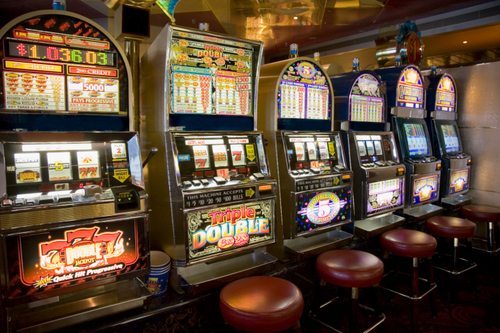Multiplayer online battle arena games have a rich history in the gaming sector. Early creations within the genre stemmed from modded content, with Starcraft’s Aeon of Strife being one of the first available lane-pushing titles. However, it wasn’t until 2003 that this gaming concept hit the mainstream market, with Valve Corporation’s Dota captivating online players with Defense of the Ancients. Since then, the MOBA trend has snowballed, particularly on PC.
That said, while PCs have long been at the heart of bringing the latest MOBAs to the market, the emergence of a new player has brought added competition to the genre. In recent times, multiplayer battle arena titles have transitioned onto the mobile market. Although the genre is still somewhat in its smartphone infancy, Back2Gaming reports that it’s already become a popular sector, registering millions of app downloads and regular players. But how does this newfound mobile appeal translate to competitive gaming opportunities? Well, let’s consider the future of mobile MOBA eSports.
An Increase in User Engagement
At the time of writing, the eSports market is rapidly growing globally, and Medium states that it’s one of the world’s fastest-growing sports. While this is a testament to competitive gaming’s immersive nature, it also speaks volumes about the impact of smartphones. As touched on above, eSports and MOBAs have recently sought to explore the smartphone market, and that expansive approach has significantly aided the industry’s engagement figures. As per Invision Gaming Community, while mobile battle arena content amassed nearly 850 million hours of video streaming across leading content sites, MOBA games registered 340 hours. Despite being less, this figure represents a 44 percent watch time increase between November 2020 and April 2021.
Although MOBAs aren’t yet at battle arena levels of popularity, they’re undoubtedly closing the gap. The same report states that battle arena watch time dropped by 87 million hours in the same period. This showcases that, despite MOBAs lagging, steady progress is slowly leveling the playing field. One way that developers have secured greater levels of user engagement is by creating unique content. Take Overwatch as an example. The Blizzard Entertainment title hit the market in May 2016, and it undoubtedly took MOBAs to the next level by combining online battle arenas with first-person shooters, as we wrote at ragezone.com.
However, Overwatch isn’t alone in heightening MOBAs’ global popularity. While it adopted a forward-thinking approach to game development and opened the door to competitive gaming, other titles have since built on those foundations. Mobile Legends: Bang Bang was also released in 2016, and it has since become one of the most popular games in Southeast Asia. While there are striking similarities to League of Legends, the game has been at the forefront of enhancing user engagement by crossing over into the online betting sector. At the leading eSports betting sites from asiabet.org, players can peruse a wide-ranging selection of Mobile Legends betting markets, ranging from the first kill to how many towers a team takes. The Moonton development has successfully broken into the gambling market because of its vast array of tournaments, with top-rated sites hosting odds relating to Mobile Legends UAE and the FirstDataCorp MOBA Tournament.
Mobile Gaming Isn’t a Stepping Stone
As Mobile Legends: Bang Bang indicates, competitive mobile gaming isn’t just a flash in the pan. As a versatile market, there’s scope for longevity and sustained consumer engagement, thus enabling remote platforms to compete with mainstream consoles. Nowadays, few believe that mobiles are a stepping stone to console gaming, with the handheld alternative establishing itself as a go-to platform in the modern era of gaming.
From the above, there can be no doubt that MOBAs are growing in popularity within the 21st century. As such, there’s scope for the genre to reach new heights over the coming years, especially as mobile gaming isn’t a short-term trend. According to The Esports Observer, smartphone crossovers of PC games can sustain their own eSports ecosystems because they aren’t identical to desktop alternatives. This is true in League of Legends and League of Legends: Wild Rift. While the titles share core mechanics, they feature different abilities and characters, bringing depth and variation to mobile MOBAs.
Statistically, competitive mobile gaming is on the rise, and that trend appears unlikely to fade soon. According to IOL, the handheld eSports market generated $19.5 billion in revenue in 2019, registering a 27.5 percent growth from the previous year. If MOBAs become more popular, this could undoubtedly elevate the market’s worth to new, unprecedented heights.
The MOBA Future is Mobile
As touched on above, MOBAs’ rose to prominence on PCs and desktops, but they’ve reached new audiences in the digital era via smartphones. While titles like League of Legends and Dota laid the foundations, increased ventures into the mobile market provide an insight into the genre’s future. Although there are no guarantees that this transition will see MOBAs amass battle arena levels of popularity, it’s not out of the question.




